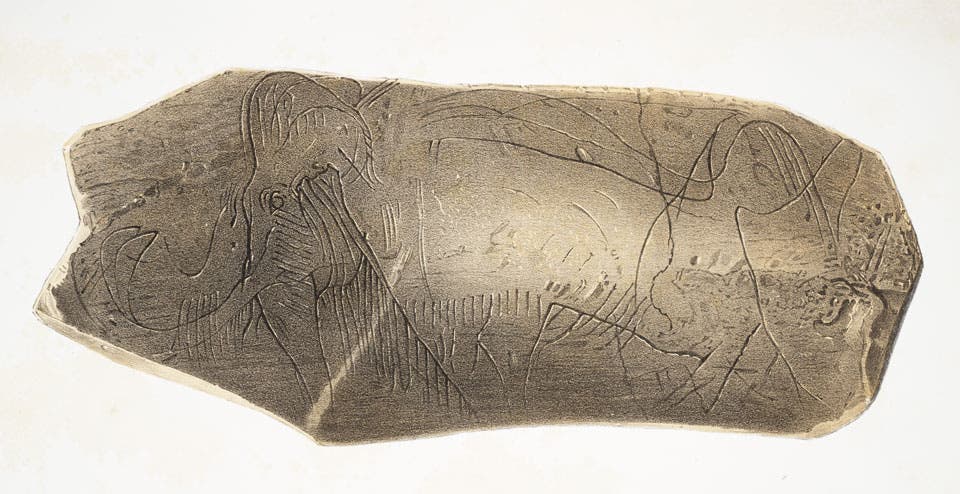Paleolithic Artists at Work, 1870
Figuier, Louis (1819-1894). Primitive Man. London: Chapman and Hall, 1870.
The English translation of Figuier’s L'homme primitif, which appeared the same year as the original, used the same illustrations by Bayard. One of the most recent discoveries about prehistoric humans was that they created works of art by engraving bones and stones with fine stone chisels, or burins. Bayard shows us three such artists at work, sculpting, carving, and engraving. Notice that none of these is painting on cave walls. The first cave paintings would not be discovered for another nine years, and would not be recognized as a genuine mode of Paleolithic artistic expression until the very end of the century.

